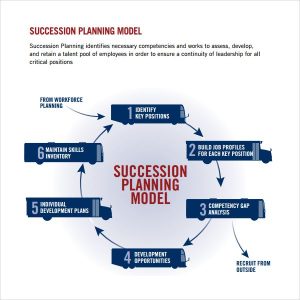
The corporate world is recognizing the importance of diversity and inclusion (D&I) programs as part of their
overall business strategy. These programs focus on creating a work environment that celebrates and respects
differences, ultimately leading to increased productivity, innovation, and employee satisfaction. In this
article, we will explore the significance of diversity and inclusion programs and how they can contribute to the
success of organizations today.
The Importance of Diversity and Inclusion
Diversity refers to the representation of various demographic groups within an organization, including
differences in gender, race, ethnicity, age, religion, disability, and sexual orientation. Inclusion, on the
other hand, involves creating an environment where everyone feels valued, respected, and supported, regardless
of their differences. Together, diversity and inclusion help organizations harness the power of different
perspectives and experiences, which is vital for staying competitive in a globalized world.
The Benefits of Diversity and Inclusion Programs
Implementing diversity and inclusion programs can yield numerous advantages for both employees and
organizations. Firstly, such programs foster innovation by encouraging employees to bring their unique ideas and
perspectives to the table. Research has shown that diverse teams are more likely to generate creative solutions
and make better decisions due to the variety of viewpoints involved.
Secondly, diversity and inclusion programs improve employee engagement and retention. When individuals feel
included and can bring their whole selves to work, they are more likely to be satisfied with their job and
committed to the organization’s goals. This, in turn, reduces turnover rates and saves significant costs
associated with hiring and training new employees.
Thirdly, diverse teams are better equipped to understand and cater to a diverse customer base. By embracing
diversity, organizations can enhance their ability to connect with customers from various backgrounds and
cultures, leading to increased market share and customer loyalty.
Implementing Successful D&I Programs
To establish effective diversity and inclusion programs, organizations must take a comprehensive approach that
goes beyond mere lip service. It begins with the commitment of top-level executives, who must act as champions
of D&I and integrate it into the company’s core values, policies, and practices.
Employee training and education play a crucial role in fostering diversity and inclusion. Companies should
provide awareness programs and workshops to promote cultural competence, unconscious bias awareness, and the
importance of creating an inclusive work environment. Additionally, mentoring and sponsorship programs can help
underrepresented individuals advance in their careers and ensure equal opportunities for all.
Creating employee resource groups (ERGs) can also contribute to the success of diversity and inclusion
programs. ERGs provide a platform for employees with similar backgrounds or interests to connect, share
experiences, and offer valuable feedback to management. These groups help create a sense of belonging and foster
a supportive work culture.
Measuring the Effectiveness of D&I Programs
It is essential for organizations to measure the effectiveness of their diversity and inclusion programs to
identify areas for improvement. This can be done through regular employee surveys, focus groups, or anonymous
feedback channels. By gathering data on employees’ perceptions and experiences, organizations can make
data-driven decisions and continuously enhance their D&I initiatives.
Conclusion
In an increasingly diverse and interconnected world, diversity and inclusion programs are no longer optional
but essential for organizations to thrive. By embracing diversity and fostering an inclusive workplace culture,
organizations can unlock numerous benefits, including increased innovation, employee satisfaction, and customer
loyalty. It is up to leaders to champion and prioritize diversity and inclusion, ensuring that it becomes deeply
woven into the fabric of the organization.

